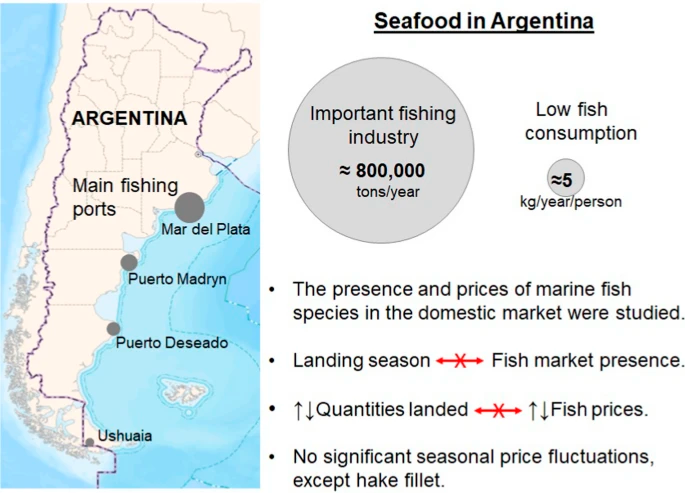Reviews in Fish Biology and Fisheries, 9 de febrero, 2024
Abstract
Argentina is among the 20 largest seafood producing countries in the world, with an annual fish capture of about 800,000 tons. However, national annual fish consumption is low, about 5 kg per capita, and the domestic seafood market is little known. The objective of this study was to contribute to the characterization of seafood in the Argentine market. Monthly landings, presence at points of sale and prices of seafood were analyzed. The seafood data were gathered from official statistics of the Undersecretariat of Fisheries and Aquaculture, statistics from the Central Market of Buenos Aires and surveys conducted in fish shops in the city of Mar del Plata. Based on the monthly seasonal index (SI), price variations throughout the year were studied. Likewise, relative fish prices were determined by using as unit the price of Argentine hake (Merluccius hubbsi), which is the most consumed fish in the country. This study identified the marine species most present in the domestic market and their prices. The presence of the different fish species at the points of sale could not be directly associated with their landing seasons. There was also no direct link between fish prices and quantities landed. No significant seasonal fluctuations in prices were found on seafood products (SI = 90–110), with the exception of hake fillet (SI = 80–113). Many finfishes had a price peak during Easter week. Overall, price patterns suggest that seafood prices in Argentina are mainly determined by demand rather than supply. Further research on seafood traceability and fish consumption is needed to advance the understanding of the seafood market in Argentina.
Graphical abstract

